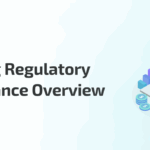How do banks evaluate the synergy between a business plan, project report, and CMA report?
Securing business funding in India often feels like navigating a complex maze. You meticulously prepare your documents, showcase your financial projections, and present your vision. However, banks look for something deeper than just isolated pieces of paper; they scrutinize how well your entire narrative aligns. When applying for a business loan, you’ll typically need three key documents: a Business Plan outlining your strategy, a Project Report detailing the specifics of execution for a particular project, and a Credit Monitoring Arrangement (CMA) Report presenting your financial projections. Many aspiring entrepreneurs and even existing business owners focus intensely on perfecting each document individually but overlook their crucial interconnectedness. This oversight can be a significant roadblock. Banks critically assess the synergy between business plan and CMA report, along with the project report, to gauge the true viability and inherent risk of your proposal. This business plan synergy assessment in India is a cornerstone of the loan approval process. This post will break down exactly how Indian banks evaluate this alignment and why ensuring consistency across these documents is vital for your loan application success.
Understanding the Key Documents: Pillars of Your Loan Application
Before diving into synergy, let’s clarify the purpose of each document from a bank’s perspective. Think of them as three pillars supporting your loan request – each must be strong and perfectly aligned with the others.
The Business Plan: Your Strategic Blueprint
- What it is: This document paints the big picture. It outlines your business’s fundamental vision and mission. It includes a thorough market analysis (detailing market size, key competitors, and your target audience), your proposed marketing and sales strategy, information about your management team and their expertise, and your overall operational plan. It answers the “What?” and “Why?” of your business venture. For more on this, consider exploring How do I develop a compelling business plan to attract investors?
- Bank’s Focus: Lenders use the business plan to understand your overall business concept, gauge the market potential you’ve identified, assess the feasibility of your long-term goals, and evaluate the capability of your management team. It’s their primary tool for the initial
bank evaluation of business strategiesand determining if the fundamental idea holds merit.
The Project Report: The Execution Roadmap
- What it is: While the Business Plan is strategic, the Project Report is tactical and specific to the project for which you seek funding (e.g., setting up a new manufacturing unit, launching a new product line). It details the project’s technical feasibility, provides location analysis, outlines raw material sourcing and the production process (if applicable), lays out a clear implementation schedule, presents a detailed cost breakdown (machinery, civil works, pre-operative expenses, working capital margins), and specifies the exact funding requirements for that particular project. You might wonder, What is a bank project report and why is it required for a business loan?
- Bank’s Focus: Here, the bank assesses the practicality of execution. They look closely at the accuracy of cost estimations, the realism of the proposed timelines, and the technical soundness of the project. The
project report assessment Indiainvolves checking if you’ve thought through the ‘how-to’ aspects thoroughly. This is critical forevaluating project reports for banks.
The CMA (Credit Monitoring Arrangement) Report: The Financial Health Check
- What it is: The CMA report translates your plans and project details into standardized financial data. It typically presents past financial performance (for existing businesses) and, crucially, projected financials – usually including Profit & Loss Statements, Balance Sheets, and Cash Flow Statements for the next 3-5 years (sometimes longer). It also includes key ratio analysis (like Debt Service Coverage Ratio (DSCR), Current Ratio, Debt-Equity Ratio) based on specific, stated assumptions. Understanding What is a CMA report and how does it support a bank loan application? is crucial at this stage.
- Bank’s Focus: The bank zeroes in on financial viability and repayment capacity. They conduct a detailed
CMA report analysis for banksto understand profitability, cash flow generation potential, key financial indicators under various scenarios (sensitivity analysis), and, importantly, the validity of the underlying assumptions driving those projections. The CMA report is also vital for ongoing credit monitoring after the loan is disbursed, allowing the bank to track performance against projections.
Why Synergy Matters: The Bank’s Perspective on Consistency
Now, why are banks so focused on the alignment, or synergy, between these three documents? It’s because consistency paints a picture of a well-thought-out, realistic, and competently managed venture. A lack of synergy, conversely, immediately raises red flags and suggests potential problems.
Here’s why banks prioritize this consistency:
Risk Mitigation: Inconsistencies are warning signs. They might indicate poor planning, unrealistic expectations, or even an attempt to obscure potential weaknesses. If your projected revenue in the CMA doesn’t logically flow from the market analysis and marketing strategy in your Business Plan, the bank perceives a higher risk of default. A cohesive story reduces the lender’s perceived risk.
Validating Assumptions: Financial projections in the CMA report are built on assumptions (about sales growth, costs, market conditions, etc.). Banks need to be confident that these assumptions are not just optimistic guesses but are firmly grounded in the strategic realities outlined in the Business Plan and the operational specifics detailed in the Project Report. Synergy validates these critical assumptions.
Assessing Management Competence: Presenting a set of documents where the numbers, plans, and strategies all align demonstrates thoroughness, attention to detail, and professionalism. It shows the bank that the management team understands their business drivers and has planned diligently. Conversely, disjointed reports can signal a lack of management depth or control.
Confidence in Repayment: Ultimately, the bank needs assurance that you can repay the loan. The project viability evaluation India hinges on believable cash flow projections. Strong synergy across your documents reinforces the credibility of these projections. If the Business Plan shows a solid market opportunity, the Project Report details a feasible execution plan, and the CMA Report translates this into robust, logically derived cash flows, the bank gains confidence in your ability to meet your financial obligations.
How Banks Evaluate the Synergy Between Business Plan, Project Report, and CMA Report
Banks don’t just read these documents in isolation; they actively cross-reference information, looking for logical connections and consistency. This evaluation of the synergy between business plan and CMA report (and the project report) is a meticulous process.
Consistency Checks: Connecting the Dots
Lenders systematically compare specific elements across all three reports:
Market & Sales Alignment: Does the market size and target market share discussed in your Business Plan logically support the sales revenue figures projected in your CMA Report? Is the marketing strategy outlined (and its associated costs, possibly detailed in the Project Report’s operational expenses) robust enough to realistically achieve those projected sales volumes and growth rates? A huge jump in projected sales needs a very convincing marketing and sales plan.
Project Costs & Funding Structure: Do the detailed project costs (like machinery purchase, construction expenses, preliminary costs) listed in the Project Report directly and accurately translate into the Capital Expenditure (CapEx) figures and the proposed means of finance (term loan requirement, promoter’s equity contribution) shown in the CMA Report’s fund flow or balance sheet projections? The numbers must match perfectly.
Operational Plan & Projected Expenses: Does your operational strategy described in the Business Plan (e.g., planned staffing levels, production capacity, sourcing strategy) align coherently with the operational expenses (like salaries, rent, utilities, raw material costs) projected in your CMA’s Profit & Loss statement? For instance, planning a large production increase without a corresponding rise in projected raw material costs or workforce expenses is a major red flag.
Timelines & Financial Phasing: Does the project implementation timeline detailed in the Project Report (phases of construction, machinery installation, commissioning) align with the fund utilization plan (drawdown schedule) and the revenue generation ramp-up period reflected in the CMA projections? Delays in the project timeline must be reflected in delayed revenue streams in the CMA.
Validating Assumptions: The Foundation of Projections
The assumptions underpinning your CMA projections are put under a microscope. Banks will:
Scrutinize Listed Assumptions: They carefully review the core assumptions explicitly stated in the CMA report – such as projected sales growth percentages, inflation rates applied to costs, debtor and creditor holding periods, and expected profit margins.
Check for Justification: More importantly, they check if these assumptions are realistic and adequately justified by the qualitative information present in the Business Plan (market analysis, competitive landscape) and the Project Report (technical feasibility, operational efficiency). For example, projecting a significantly shorter debtor collection period than industry norms requires strong justification in your business plan regarding your credit policy or customer base. An assumption of high operational efficiency needs backing from the technical details in the project report.
Ratio Analysis in Context
While the CMA report calculates key financial ratios (DSCR, Current Ratio, TOL/TNW, etc.), the bank’s CMA report analysis for banks goes beyond simply looking at these numbers in isolation. They interpret these ratios within the context provided by the Business Plan and Project Report.
Example: A projected Debt Service Coverage Ratio (DSCR) of 2.0x might look healthy on paper. However, the bank will deem it credible only if the underlying sales revenue and operating profit projections (which drive the DSCR calculation) are considered realistic and achievable based on the validation against the Business Plan’s market assessment and the Project Report’s operational plan. If the foundational plans seem weak or overly optimistic, even strong projected ratios will be viewed with skepticism.
The Crucial Role of CMA in Project Funding India
While all three documents are essential, the CMA report often becomes the central focus during the detailed financial appraisal phase. Understanding the specific role of CMA in project funding India highlights its significance.
The Financial Translator: The CMA acts as the bridge, translating the strategic vision (Business Plan) and the execution details (Project Report) into the quantitative financial language that banks primarily use for credit decisions. It quantifies the expected outcomes of your plans.
Bank’s Primary Financial Assessment Tool: Because it presents projected Profit & Loss, Balance Sheets, Cash Flows, and key ratios in a structured manner, the CMA is the bank’s go-to document for in-depth financial scrutiny. Loan officers are trained to dissect CMA data to assess profitability, liquidity, solvency, and repayment capacity.
Standardization Facilitates Comparison: The standardized format of the CMA report (though minor variations exist) allows banks to efficiently compare the financial profiles of different loan applicants and projects against their internal benchmarks and risk assessment criteria.
Credibility Hinges on Alignment: It’s crucial to reiterate this point: the CMA report’s power and credibility are entirely dependent on its synergy with the Business Plan and Project Report. Without this alignment, the CMA becomes merely a set of numbers lacking a believable foundation, significantly weakening your loan application. A robust CMA must be a direct, logical financial consequence of the strategies and plans laid out elsewhere.
Common Red Flags: Inconsistencies Banks Look For
Being aware of common pitfalls can help you proactively ensure consistency in your documentation. Banks are adept at spotting discrepancies like:
- Mismatched Revenue & Market: Projected revenues in the CMA seem disproportionately high compared to the market size, potential market share, or competitive intensity described in the Business Plan. The marketing plan might also lack the scale or budget to support such projections.
- Incomplete Cost Translation: Specific costs detailed in the Project Report (e.g., a particular piece of machinery, specific renovation works) are not fully or accurately reflected in the CMA’s capital expenditure projections or the schedule of assets.
- Unrealistic Operational Expenses: The operating expenses (like salaries, rent, utilities) projected in the CMA seem too low given the scale of operations, staffing levels, or production targets described in the Business Plan or Project Report.
- Conflicting Timelines: The timeline for project completion mentioned in the Project Report doesn’t match the fund deployment schedule or the start date for projected revenue generation shown in the CMA.
- Differing Funding Needs: The total project cost, the required loan amount, or the promoter’s equity contribution figures differ between the Project Report and the CMA Report.
- Vague Strategies, Precise Numbers: The Business Plan offers very generic or vague strategies regarding market entry, competition handling, or operations, yet the CMA presents highly specific and optimistic financial projections seemingly pulled out of thin air.
Conclusion: Ensuring Cohesion for Loan Success
Securing business finance in India requires more than just good ideas and individual documents. Banks perform a thorough business plan evaluation in India, which fundamentally includes assessing the alignment between your strategic vision, your execution plan, and your financial forecasts. The Business Plan, Project Report, and CMA Report should not be treated as separate assignments but as interconnected chapters of a single, compelling story about your business venture.
Remember, the synergy between business plan and CMA report, validated by the practical details in your Project Report, is paramount. This critical business plan synergy assessment in India determines the credibility of your entire proposal. Demonstrating consistency across these documents builds trust, showcases your professionalism and planning diligence, significantly mitigates the bank’s perceived risk, and ultimately boosts your chances of securing the funding necessary to turn your business goals into reality.
Struggling to ensure your Business Plan, Project Report, and CMA Report are perfectly aligned and tell a convincing story to lenders? TaxRobo’s experts specialize in preparing cohesive and compelling loan application packages tailored to Indian banking requirements. Contact us today for assistance!
Frequently Asked Questions (FAQs)
- Q1: What’s the key difference between a Project Report and a CMA Report for bank loan purposes in India?
Answer: The Project Report focuses on the specific project being funded – its technical details, location, implementation plan, and detailed cost breakdown. It’s about the ‘how’ and ‘what’ of the project itself. The CMA Report, on the other hand, focuses on the overall financial health and projections of the business entity undertaking the project. It presents past financials (if any) and future projected Profit & Loss, Balance Sheet, and Cash Flow statements in a standardized format designed for credit analysis and monitoring by the bank. - Q2: Can I prepare these reports myself, or do I need a professional?
Answer: While it’s technically possible to prepare these documents yourself, especially if you have a strong financial background, engaging professionals like Chartered Accountants or financial consultants is highly recommended. They possess a deep understanding of bank expectations, ensure financial accuracy, maintain the crucial consistency across documents, and are proficient in preparing data in the required formats (particularly the CMA). Professional preparation significantly enhances the credibility and polish of your application, improving your chances of approval. TaxRobo offers expert assistance in preparing these reports; you can learn more via our Online CA Consultation Service. - Q3: How critical is the
synergy between business plan and CMA reportcompared to just having strong financials in the CMA?
Answer: The synergy is extremely critical. Strong financial numbers presented in the CMA report are essentially meaningless to a bank if they aren’t demonstrably supported by a credible strategy outlined in the Business Plan and realistic operational details provided in the Project Report. Banks need to believe how you will achieve those numbers. They fund well-reasoned, believable plans, not just optimistic spreadsheets. Lack of synergy undermines the entire application, regardless of how good the isolated CMA projections might look. - Q4: What if my business is already established? Do I still need all three reports for an expansion loan?
Answer: Yes, generally you will still need updated versions of these documents. You’ll require an updated Business Plan reflecting your expansion strategy and how it fits into your overall business. You’ll need a specific Project Report detailing the costs, timeline, and technical aspects of the expansion project itself. And importantly, you’ll need CMA data that includes your actual past performance along with future projections incorporating the planned expansion’s impact on revenue, costs, and funding. Consistency and synergy between these updated documents remain just as crucial for securing an expansion loan. - Q5: Are there specific RBI guidelines for CMA reports in India?
Answer: The Credit Monitoring Arrangement (CMA) format is a widely adopted standard practice within the Indian banking industry, originally stemming from RBI recommendations for credit appraisal systems. While the RBI provides broad guidelines on sound credit appraisal, risk management, and monitoring practices for banks, it doesn’t typically prescribe a single, rigid, universally mandated template for the CMA report itself down to the last detail. However, the core components and the financial statements included are largely standardized. Banks often have their preferred variations or specific requirements. Using formats commonly accepted by most major banks, or seeking professional help to ensure compliance with typical banking norms, is the best approach.



